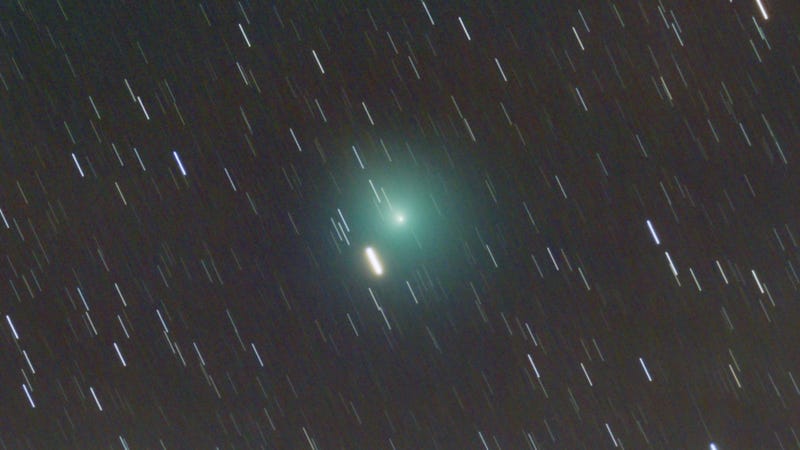 An image of the cometImage: ESA / ESAC Astronomy Club / W. Van Reeven
An image of the cometImage: ESA / ESAC Astronomy Club / W. Van Reeven
The year’s brightest comet will make its closest approach with Earth over the weekend—and, if you’re in the right spot, you should be able to see it without a telescope.
46P/Wirtanen is a fuzzy green blob that orbits Earth every 5.5 years. It hit its closest point to the Sun on Wednesday, and should be its brightest on Saturday or Sunday.
Comets are small, loosely bound agglomerations of ice, dust, and rock. They contain comas, the haze caused by particles from the Sun striking the comet’s nucleus. Scientists generally consider comets and asteroids to have different origins, but there are exceptions that look like asteroids and orbit like comets, called Manx objects.
46P/Wirtanen appears green here because cyanogen and diatomic carbon molecules have been ionized by the sunlight, according to a European Space Agency release. The bright comet was the initial target for the Rosetta lander, but due to a launch delay in 2003, the Rosetta team ultimately selected comet 67P/Churyumov–Gerasimenko instead.
Scientists will be studying this comet—not in as much detail Rosetta achieved studying 67P—but still adding data to its story.
Weather permitting, the comet could reach a magnitude of 3, though it’s hard to say for sure and depends on the brightness of the sky. If you can see all of the stars of the Little Dipper, you’ve got a chance of spotting the comet. It will be located by the Pleiades over the weekend. According to Sky and Telescope, the Moon’s light could wash out the comet—so it might be best to wait until after midnight tonight or 1 a.m. tomorrow night if you were hoping to spot the comet. The tail will not be visible, due to the comet’s orientation.
The Virtual Telescope Project will stream views of the comet for city slickers like me.
On top of that, if you’re already outside looking, there should be an extra show to enjoy—the Geminid meteor shower, which peaked this morning, according to EarthSky.org, and should continue into the weekend.
It’s as good a reason as any to look at the sky!
Share This Story